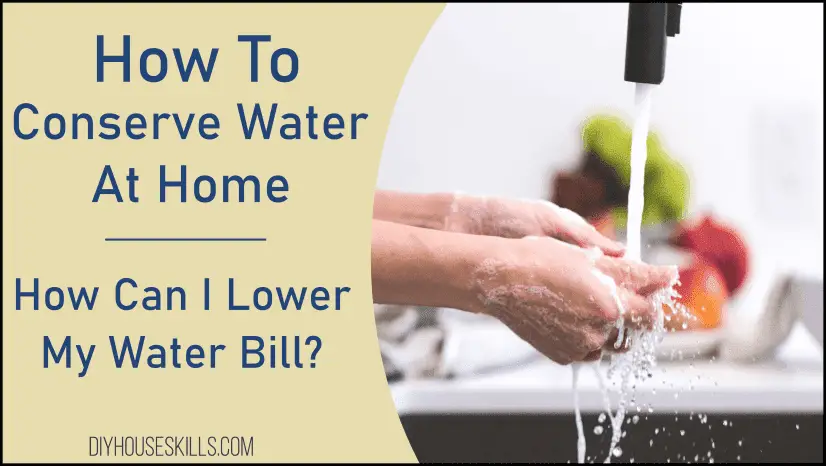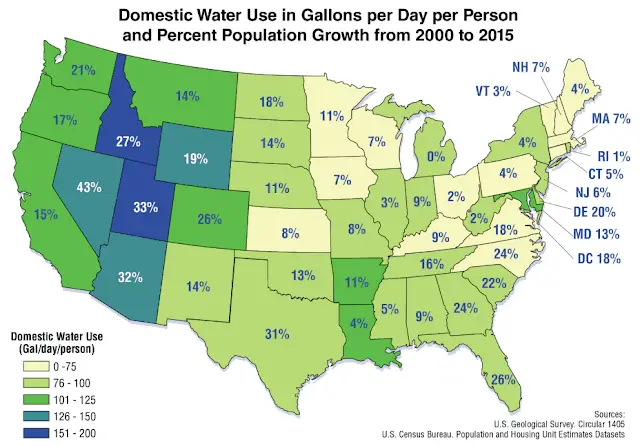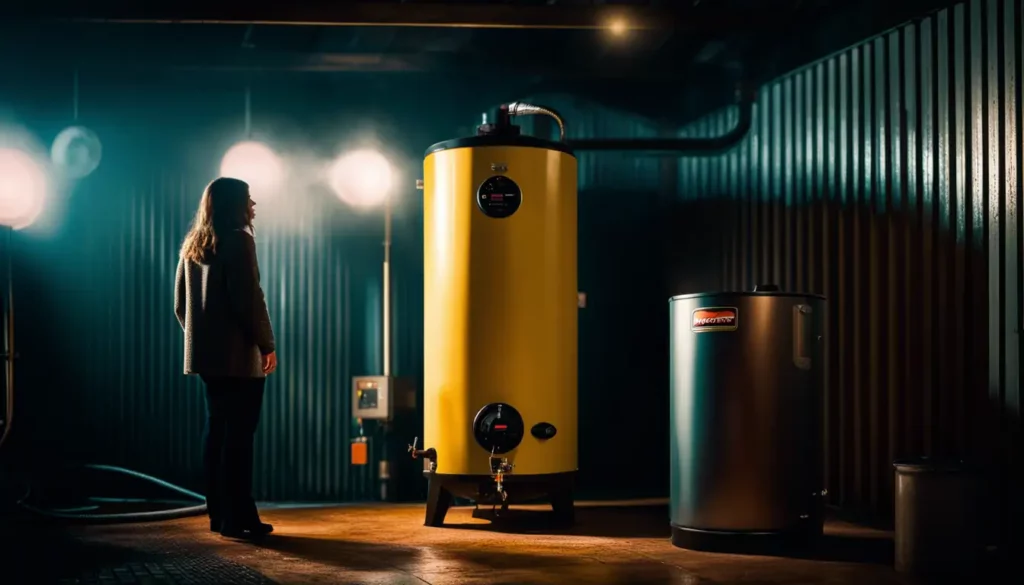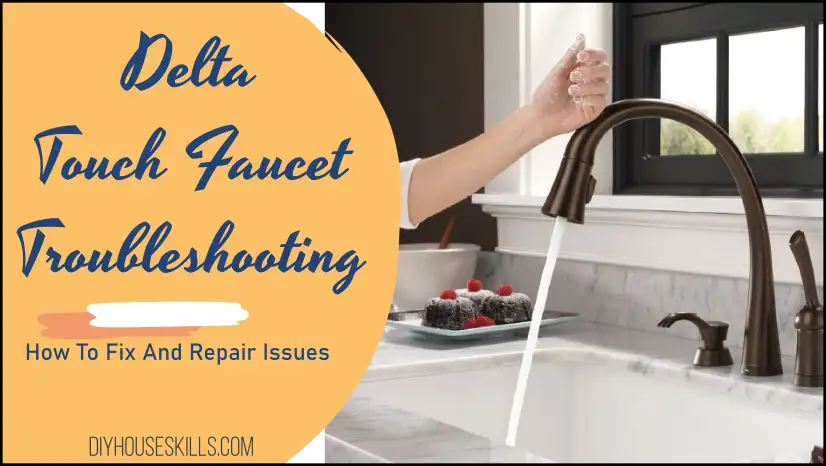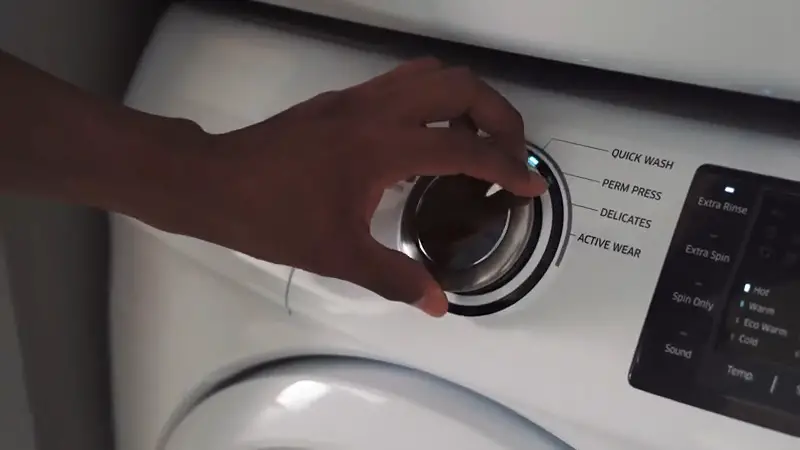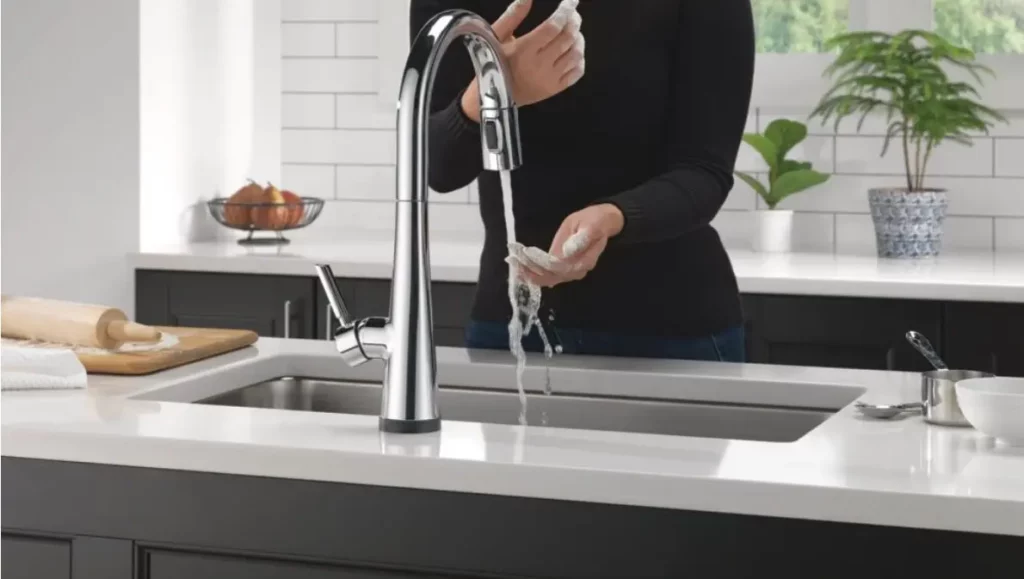People in the United States use a lot of water. Most of us take for granted a constant and steady supply of clean fresh water in our homes. As the weather becomes more unpredictable and the climate is producing extreme temperatures, the water tables are falling and general reservoir supplies are becoming more constrained.
It’s good news that more and more people are starting to take notice and want to have a more active role in conserving their water use at home.
To conserve water inside and outside of your home involves being conscious of your use, applying efficient use techniques, and creating a water-saving plan to achieve your goals.
Conserve Water Usage At Home
How To Conserve Water At Home
The average person in the United States uses between 80 and 100 gallons of water every day. That amounts to 29,000 to 36,000 gallons a year per person.
The following tips will help to reduce water usage:
- Turn off the faucet while you brush your teeth. This is an old tip but still important.
- Run the dishwasher when it has a full load. It wastes water if it’s half-filled.
- Switch to low-flow showerheads. Many newer products on the market are low flow already. Check yours as a shower can use between 10 and 25 gallons.
- Install water-efficient appliances as newer models reduce usage.
- Install a dual flush or low-flow toilet. The average person flushed a toilet about 5 times a day.
- Run sprinkler irrigation system efficiently. That is don’t overwater or water during high heat.
- Collect water in a rain barrel from downspouts to use for outdoor watering.
- Look for and fix leaks around the house. Check the sprinkler system also.
- Plant drought-tolerant outside plants and xeriscaping.
- Check your monthly water usage from the water bill so you know your current usage as a starting point.
What Are 5 Ways To Conserve Water?
What Is Water Conservation?
In simple terms, water conservation is using and managing water efficiently. In a broader sense, water conservation is a whole scope of policies put in place to achieve sustainable practices of freshwater storage, management, and usage.
Did you know?
- If you reduce your shower by just 1 minute, you could save about 1,000 gallons a year.
- The average person flushes the toilet 5 times a day. Newer toilets use about 1.6gpf (gallons per flush). That’s almost 3,000 gallons a year.
- The average person uses about 4,300 gallons of water through faucets.
To conserve water:
- Reduce your shower time and reduce the water flow rate.
- Turn off faucets while brushing teeth and doing the dishes.
- Invest in newer efficient appliances and low-flow showerheads.
- Check for leaks. A dripping faucet or a running toilet can waste a lot of water. Go around the house and look for any leaks including outside faucets and irrigation systems.
- Calculate how much water you use with a free tool from https://www.watercalculator.org/
Rainwater Harvesting:
Rainwater harvesting is the practice of collecting rainwater in some type of receptacle, commonly a barrel. Many homeowners install a barrel under a gutter downspout to collect water for irrigation.
1 inch of rain that falls on 1,000 square feet of roof can produce about 600 gallons.
Note that a larger capacity system such as a 400-gallon storage tank might require a permit from your city or municipality. And rainwater harvesting is not suitable for drinking as it is non-potable
Related: Read my article on the best water filters you can buy for your home.
How Can I Lower My Water Bill?
- Reduce indoor water use as stated above. Start by calculating your current water usage and apply the tips outlined above.
- Reduce outdoor water use. Run sprinkler irrigation early in the day and only as needed. Reduce lawn size by using more drought-tolerant plants.
- Use less energy overall and you will use less water. Energy and water are linked.
- Recycle more often. Recycling saves water usage in manufacturing.
- Maintain your home. See my article on Easy Home Maintenance for tips.
What Is The Biggest Waste Of Water?
In the home, we generally use more water in the bathroom than anywhere else. That’s no surprise since there is a toilet, sink, and shower in there.
Consider taking a shorter shower, just a few gallons every day adds up over the course of a year.
Don’t flush the toilet as often if it’s not needed. A household uses roughly 30 gallons of water through the toilet every day.
The biggest use of outdoor water is generally the sprinkler irrigation system. Although, pools use a lot of water too.
Biggest Water Use: Indoors – Bathroom, Outdoors – Sprinkler System.
The picture below is sourced from the EPA.gov website and displays a breakdown of water use in gallons per day per person across the country.
>> Having issues with your smart faucet?
See my article: Moen MotionSense Faucet Not Working (How To Fix)
What Is The Future Of Water?
The Importance Of Water Conservation:
Our resources of freshwater are already being strained in many parts of the country. In the future, we will certainly see this continue as the demand will continue to increase and the population continues to grow. The US Government Accountability Office(GAO) stated that water managers across the country expect water shortages within the next decade.
Pewtrusts.org states that “Water scarcity may ultimately also limit food production. The food industry is the largest user of water worldwide, consuming far more than is available on an annually renewable basis. In fact, most of the world’s food-producing regions are in a state of chronic water scarcity, with no end in sight given current rates of production and levels of agricultural efficiency.“
We must take water conservation seriously and commit to new actions and best practices that will reduce our usage. The more proactive we are now, the less disruptive the future will be in regard to
our access to fresh water.
Municipalities will have to invest in infrastructure for water treatment plants and much of that cost will fall on the consumer.
Conclusion
The world’s population is predicted to continue expanding as will the need for access to fresh water sources. We all need to start being water aware, especially in the U.S. and consider our current usage, then apply water-saving techniques to our daily lives. A few simple steps are easy to implement and can have a quite large cumulative effect.
- Eufy Scale Troubleshooting | How To FixLooking for Eufy scale troubleshooting to resolve issues you are having? This article goes step by step through troubleshooting procedures. Eufy scale troubleshooting will get to the cause of issues encountered and get the scale working properly again. How To Fix Eufy Scale Not Working I’ve tried to cover questions users frequently have with their Eufy scale. Let’s go through them … Read more
- Flushing Water Heater Sediment Like a Pro: The Homeowner’s HandbookEnsuring your water heater remains efficient and effective is crucial for any household, yet sediment buildup can significantly compromise its performance. This article will guide you through understanding why sediment accumulates, the issues it can cause, and provide straightforward steps to safely flush your water heater at home, saving you time and possibly extensive repair costs. It’s a common problem, yet … Read more
- Delta Touch Faucet Not Working? Here’s What to Do!Navigating the complexities of modern home technology can occasionally present challenges, such as those encountered with the Delta Touch Faucet. This guide is designed to simplify these challenges by providing detailed solutions to common issues, ensuring your faucet functions optimally with minimal hassle. Delta Touch kitchen faucet troubleshooting can resolve your problems by following the procedures below and getting the faucet … Read more
- What Does “SE” Mean on My Samsung Washer?Seeing the dreaded “SE” error code on your Samsung washer can be frustrating, but don’t panic. This guide will help you understand what it means, diagnose the cause, and walk you through potential solutions to get your laundry cycle back on track. Understanding the “SE” Error First things first, what exactly does “SE” mean on a Samsung washer? It’s an indication … Read more
- How to Disable the Touch Feature on a Delta FaucetSometimes the convenience of a touch-activated faucet isn’t so convenient – like when you’re cleaning, have messy hands, or maybe the feature is just behaving a bit erratically. If you need to temporarily or permanently disable your Delta touch faucet this article tells you how. The process is quick and painless. Steps to Turn Off Touch Feature on a Delta Faucet … Read more

